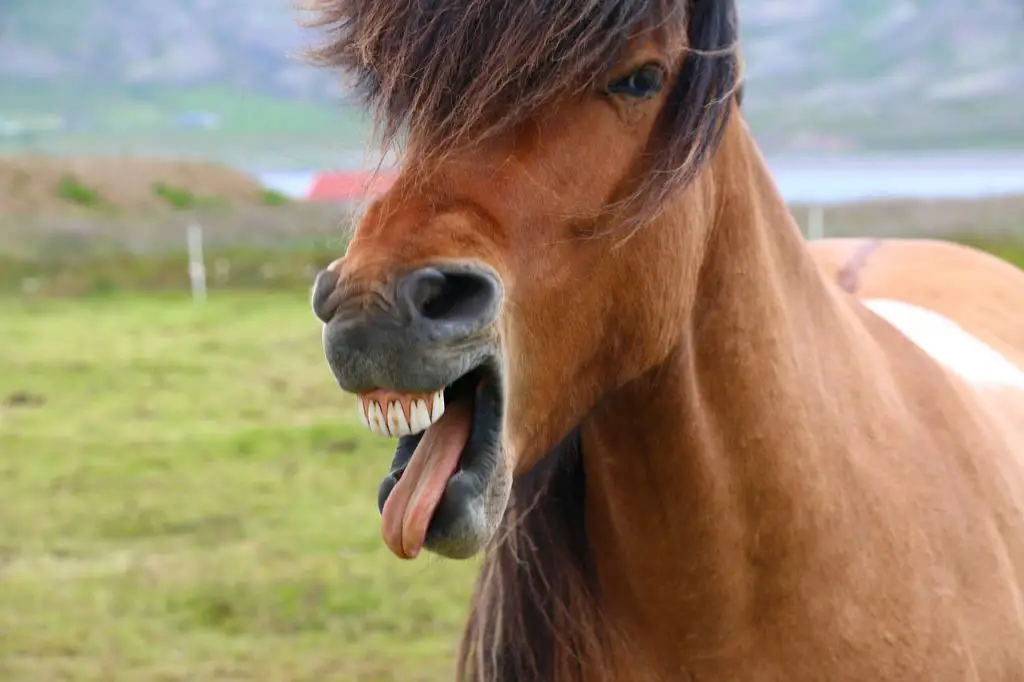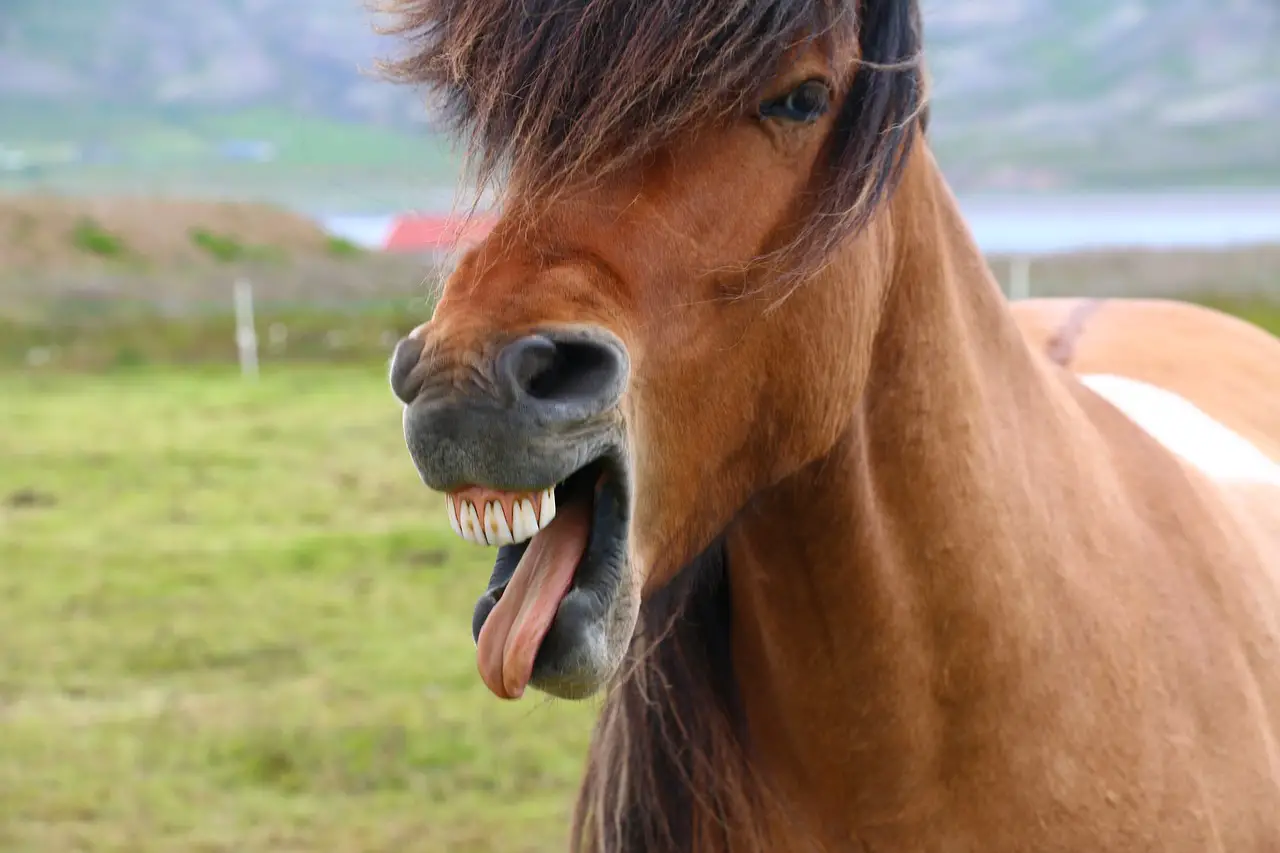Last Updated on February 22, 2022 by Allison Price
It is important to understand the basic body language of horses if you want them to be safe. You can avoid potentially dangerous conflicts and accidents by knowing when horses are angry and what they’re likely to do next.
Flattened ears, bared teeth, raising a hind leg off of the ground and general tension throughout your body are the main indicators that a horse is mad. These signs are a sign that a horse is angry. If you spot one, don’t be alarmed. Ask an experienced person for assistance.
Be aware that there are many elements that make up a behavior. Therefore, you should not draw any conclusions from one signal alone. This can lead to misleading conclusions. To get the complete picture, you should look at the entire animal and evaluate many signals as well as the surrounding environment.
Safety Disclaimer: Be cautious if your horse displays any of these signs. Do not provoke your horse if he is clearly upset. For your safety and that of others, find shelter at a safe distance and call for assistance.
These are the 10 signs that a horse is mad

Do not eat your teeth
Horses might show their teeth in many different situations. Horses might show their teeth in yawning, or the Flehmen Response. This is when horses raise their upper lips to draw strange smells into their special organ system. Stallions are known to exhibit this behavior when around mares. You can also trigger it by putting an orange in front.
These behaviors are not dangerous, but horses that bare their teeth, roll their eyes, and flatten their ears can be a sign it’s time to get serious. This is when a horse is ready for a fight and it is a good idea not to get too close to the animal.
Domestic horses are unlikely to get angry if they are properly cared for and handled. Keep in mind, however, that if an angry horse shows his teeth, it’s likely that he will bite and keep away.
You should also read our 8 things horses don’t like and what you should avoid doing.
Flattened ears
Horses’ ears can move up to 180 degrees and have a huge range of motion. Horses can detect the source of a sound better and get more information. Horses listen to sounds coming from behind by turning their ears backwards when they hear them. This is often mistakenly thought to be a sign of anger.
Horses can show anger by having their ears pressed against the neck. Horses instinctively do this so that they don’t get hurt or torn during a battle. This sign is usually displayed with a tight facial expression and bared teeth. In these cases, it is best to avoid the horse.
Be careful if you notice a horse flattening its ears. If you are familiar with the horse, you might reprimand him if he flattens his ears. You might see a horse flattening his ears to show discomfort or pain. To make sure that everything is fine, check the tack and other areas.
Tensed facial expression
Did you know that horses have facial expressions just as complex as humans? Scientists have found that horses’ facial expressions play an important role in communicating with each other and humans. They can recognize both the emotional value and the facial expressions of horses.
Similar to humans, horses’ faces can tell a lot about how they feel. The horse will be happy and relaxed if his muscles are relaxed, and there are no wrinkles around his eyes or the muzzle. If the opposite happens, the horse may be upset or in pain. Be aware of the situation and take care.
It will take some practice to learn how to read a horse’s mood and it will improve your relationship.
Pawing/Stamping
Horses that paw the ground often show boredom or impatience. Horses that are left unattended will begin to paw at you if they don’t have any food or company. Horses may also stamp to remove an insect from their legs.
Horses can be seen playing in deep water, or exploring new objects. It is possible for horses to engage in this behavior while standing next to other horses on the field. This is when the horse threatens to charge.
Horses that are pawning in their stables can indicate boredom or stress. Horses can become bored quickly if they are not given stimulation. Check out our guide on the best horse stall boredom toys.
Tail swishing
Horses’ tails are designed to keep flies away from their bodies. In summer, you will see your horse swinging his tail when there are lots of insects. Horses can also move their tails in excitement. Arabian blood horses have a banner-like tail carriage.
If a horse isn’t relaxed or excited, a tail swishing sign can be a sign of frustration, stress, anger, or both. This signal is used to let other horses know they have crossed the line. If they do not stay clear, they might be kicked. We have discussed in our guide Do horses like to be ridden that if your horse starts to swish his tail while you are riding it, this is likely to indicate discomfort and you should make sure the tack is comfortable.
To show the hind end, turn around
The first thing a beginner horse rider should learn is to never go near the horse’s backside. Because horses have a blind spot right behind them, they might not be able to see you. This could cause them to jump or kick instinctively. It is also a sign that the horse is mad or threatening to kick you if it turns his rump towards you.
There are two options available to you when this happens. It is best to get back to your horse as quickly as possible. Another option is to correct the horse and move his rump away.
You can exert pressure on the horse and force him to leave. This is a way of demonstrating dominance and being the leader of the group. This can be dangerous so only do it if the horse is well-informed. Always approach horses from the front so they can see you, and never from the back
Lifting a hind leg
This sign is not to be confused with a horse relaxing on his fourth leg or taking a rest. Horses can stand on their three legs for extended periods of time thanks to a special anatomical device that holds the knee and hock in place.
If a horse raises a hindleg, is it accompanied by a stiff body, flattened ears and a raised head? This is likely to be a sign that the horse is angry. This behavior could be preceded or not by the turning of the hindquarters toward the opponent. This scenario can be interpreted as a threat to a kick by lifting the hind leg. You should not hesitate to get out.
It is wise to redirect a horse’s attention to something else when they are threatening. You can ask him to get up and move so that he has no choice but to put his feet on the ground. Remove the cause of the horse’s anger if you can.
Whites in the eyes
There are many reasons your horse might have whites visible in his eyes. This characteristic is common in some breeds, like the Appaloosa. This sign is usually seen in horses when they are anxious, angry, stressed, and with an elevated head or neck position.
The horse will roll his eyes and the skin around him will tighten. This causes the whites of the horses to show. This could be a sign of many things. Before you make any conclusions, you should assess the situation and your horse’s behavior. You should also be aware of your horse’s tendency to flatten his ears and shake his tail.
Tense body posture
Tense body posture is a common sign of anger in horses. This is when your horse will be tense and swaying his tail and holding his head high. Tension in the body can be a sign of stress, discomfort, disease, or anger, but it can also indicate that the horse is angry.
Horses often exhibit anger when they have a tense body. This can make horses appear anxious and tense. You should examine the situation to determine the cause. A happy horse will be relaxed, as we have discussed in our guide to the signs.
Horse anger can be caused by long-term discomfort and pain. Try to determine the root cause of your horse’s anger if it is displaying aggression in riding situations. A vet, saddle fitter or dentist can help you determine the cause of your horse’s anger.
Lips to be lusted
A horse’s muzzle at rest is usually soft and relaxed. The lower lip may be loose and the eyes open half-closed. Horses that are rubbing their nostrils and pleading their lips can be in pain, stressed or angry.
An early indicator that a horse may be about to bite is a pursed lip. This is one of the subtlest signs that horses are angry. You should also be alert for other signs such as tightening of your body, heavy breathing, flattened ears or tight facial expressions. You should use your best judgement to determine if your horse is mad.


